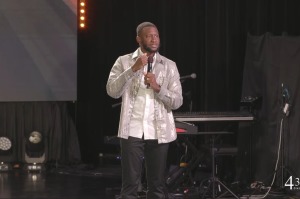Inmate Seemed Like He 'Would Never Die'
JACKSONVILLE, Fla. (AP) - It seemed like Angel Nieves Diaz would never die.
Two executioners injected him with three chemicals that were supposed to do the job in a few minutes. But 10 minutes later, he was still alive, his eyes darting back at the 25 witnesses.
Diaz shuddered several times, but continued moving and breathing for nearly half an hour, finally dying 34 minutes after the execution began.
I've witnessed all 20 lethal injections in Florida. In most cases, the inmate is unconscious in three to five minutes and dies in 10 to 15 minutes.
But Diaz, who was condemned for shooting the manager of a Miami topless club in 1979, needed a rare second dose of chemicals Wednesday before dying.
Seconds after the chemicals began flowing, Diaz looked up, blinked several times and appeared to be mouthing words, perhaps a prayer, some suggested.
A minute later, he began grimacing, later licking his lips and blowing. He appeared to move for 24 minutes after the first injection.
In most Florida executions, witnesses have little to watch. No talking is allowed, and the only sound comes from a noisy window air conditioner. First, the official witnesses take seats in the first two rows. Reporters are assigned the back two rows.
Then brown drapes separating the witness room windows from the execution chamber are opened. The inmate can be seen strapped to a gurney, IV tubes running into each arm and a sheet pulled up to below his chin. Plastic tubes extend through a hole in the wall where the two executioners, who are paid $150 in cash each, wait for a signal from the warden to begin.
Lethal injections are done in the same room where Florida's famous electric chair "Old Sparky" was used to electrocute 44 inmates after the state resumed executions in 1979 following a 15-year hiatus. Florida later switched to lethal injection because two inmates' heads caught fire during executions in the 1990s and another suffered a severe nose bleed in 2000.
After the curtains open, the warden asks if the inmate has a final statement. A microphone hanging from the ceiling picks up the condemned person's last words. In a faint voice, Diaz proclaimed his innocence in Spanish and criticized the way he was being put to death.
"The death penalty is not only a form of vengeance, but also a cowardly act by humans," he said. "I'm sorry for what is happening to me and my family who have been put through this."
In October, Gainesville serial killer Danny Rolling sang a spiritual song. In 2002, Aileen Wuornos, a prostitute who killed six customers, predicted that she would somehow be back.
After the statement, the warden nods, signaling for the chemicals to begin flowing. Two medical professionals watch a heart monitor attached to the inmate. When it shows no activity, they emerge wearing strange-looking "moon suits," which cover them from head to toe. Corrections officials say it is to protect their identity.
After checking for a pulse and shining a flashlight in the inmate's eyes, one of them nods to the warden, who notifies the governor and makes the final announcement: "The sentence of the state of Florida vs. Angel Diaz has been carried out at 6:36 p.m. Please exit to the rear of the room."
Copyright © 2006 The Associated Press. All rights reserved. The information contained in the AP News report may not be published, broadcast, rewritten or redistributed without the prior written authority of The Associated Press.





























